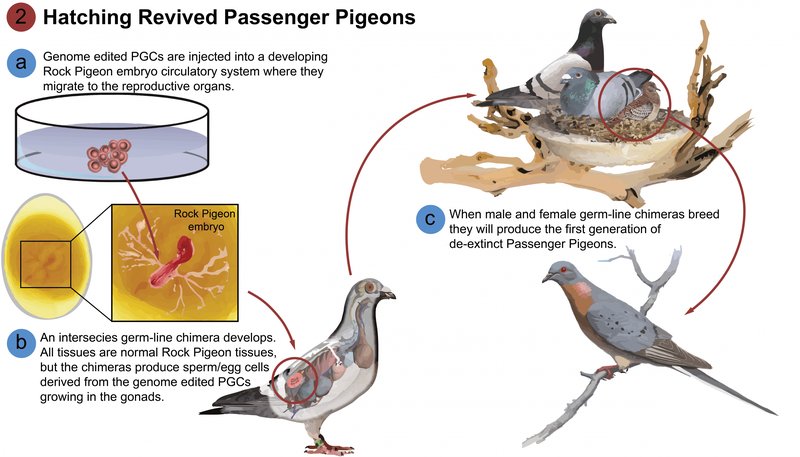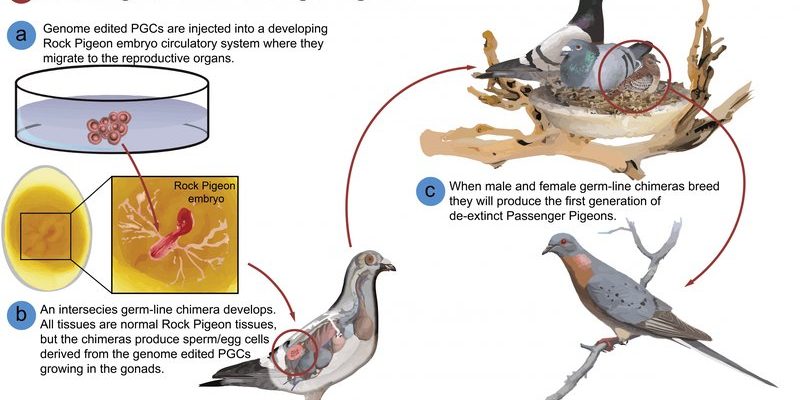
Imagine a sprawling forest filled with flocks of Passenger Pigeons. They would gather in huge numbers, creating a spectacle that could darken the sky. These birds were social creatures, thriving in large communities. Their nesting habits were a reflection of this behavior, and their lifecycle was a remarkable journey filled with unique challenges. Let’s dive deeper into how these fascinating birds lived, reproduced, and ultimately faced extinction due to human activity.
Understanding Passenger Pigeon Nesting Habits
Passenger Pigeons were notorious for their *colonial nesting* habits. They preferred to nest in large colonies, sometimes comprising thousands of pairs. This social nesting not only provided safety in numbers but also allowed them to maintain close familial bonds. You might be wondering why they chose this communal approach. Here’s the thing: nesting in large groups helped deter predators. When you have thousands of birds squawking and flapping around, it can be tough for a hawk or raccoon to pick out just one.
These colonies were often found in large deciduous forests, particularly those rich with oak and beech trees. The *canopy* of these forests provided excellent cover, while the trees themselves offered sturdy branches for constructing nests. They usually built their nests in the *forks of large branches*, using twigs and leaves for structure. Each nest was usually just a shallow platform, enough to hold a few eggs, but not much else.
Interestingly, Passenger Pigeons were known for their ability to *re-nest*. If their first attempt at nesting failed—whether due to bad weather or predation—they would often try again. This resilience made them a species capable of bouncing back in times of adversity, at least for a while.
The Mating Rituals of Passenger Pigeons
Now that we understand their nesting habits, let’s explore how Passenger Pigeons went about finding their mates. Their courtship rituals were quite the spectacle! Males would perform elaborate displays to attract females, including a mix of cooing sounds and impressive flight maneuvers. They’d puff up their chests, spread their tail feathers, and strut around like they owned the place. Honestly, it would be hard not to take notice!
Once a pair formed a bond, they often remained monogamous for life. This loyalty is pretty unique in the bird world, where many species are known to change partners frequently. The bond they formed was crucial for nurturing the young, with both parents taking an active role in raising their chicks.
Once mating occurred, the female would lay typically one or two eggs per nesting cycle. The timing of this was usually synchronized with the availability of food resources, ensuring that when the chicks hatched, they’d have plenty to eat. This connection between food availability and breeding is a key aspect of their lifecycle.
The Lifecycle of the Passenger Pigeon
Understanding the lifecycle of the Passenger Pigeon is essential to appreciating their story. After the eggs were laid, both parents took turns incubating them for about two weeks. During this time, they’d alternate between sitting on the eggs and foraging for food. It’s a bit like a well-coordinated dance—each parent knew what to do to ensure the survival of their future chicks.
When the chicks hatched, they were altricial, meaning they were born helpless and required significant parental care. This stage is crucial because, in the wild, many young birds don’t make it past the early days. Fortunately, Passenger Pigeons had a strong support system. Both parents fed their chicks a special substance known as *pigeon milk*, which is a nutrient-rich secretion produced in their digestive tracts. This is a bit different from the milk we think of, but it’s incredibly nutritious for the little ones.
As the chicks grew, they developed feathers and learned to fly. Young Passenger Pigeons would typically fledge, or leave the nest, about 25 to 30 days after hatching. It’s during this fledging stage that they begin to explore the world around them. They’d stick close to their parents for a while but would soon join the larger flocks, learning to navigate the skies alongside their peers.
The Impact of Human Activity on Their Lifecycle
As fascinating as the Passenger Pigeon’s lifecycle was, it ultimately faced severe challenges due to human activity. In the 19th century, these birds were hunted in massive numbers for their meat. This wasn’t just casual hunting; it was an industrial-scale operation. You might picture market stalls packed with pigeons, each one a victim of the insatiable demand for wild game.
The loss of habitat also played a significant role in their decline. As forests were cleared for agriculture and urban expansion, stopping to think about the implications of this on wildlife was often overlooked. Passenger Pigeons needed large areas to thrive, and as their habitats shrank, so did their populations.
By the early 20th century, despite being one of the most numerous birds on the planet, the Passenger Pigeon was driven to extinction, with the last known individual, named Martha, dying in captivity in 1914. It’s a heartbreaking reminder of the power humans wield over nature and the consequences of our actions.
Lessons from the Passenger Pigeon’s Story
So, what can we learn from the Passenger Pigeon’s nesting habits and lifecycle? Their story is more than just a tale of loss; it’s a lesson in the importance of biodiversity and conservation. The Passenger Pigeon was once so abundant that its extinction seemed unimaginable. But it happened, and that raises important questions about how we treat our remaining wildlife today.
Conservationists often refer to the Passenger Pigeon’s story as a cautionary tale. It reminds us to protect the habitats of other species and to be mindful of our impact on the environment. Understanding their nesting behaviors and lifecycle can help inform conservation efforts for other birds facing similar challenges.
If the tale of the Passenger Pigeon teaches us anything, it’s that every species plays a role in the ecosystem, and losing one can have far-reaching effects. It’s a reminder that we must be stewards of our planet, preserving its beauty and biodiversity for generations to come.
In conclusion, while we can no longer witness the magnificent flocks of Passenger Pigeons in the skies, learning about their nesting habits and lifecycle allows us to remember their role in the world. It also urges us to advocate for the conservation of the wildlife that still thrives around us. So next time you see a flock of birds soaring above, take a moment to appreciate the delicate balance of nature—every bird has a story worth telling.

